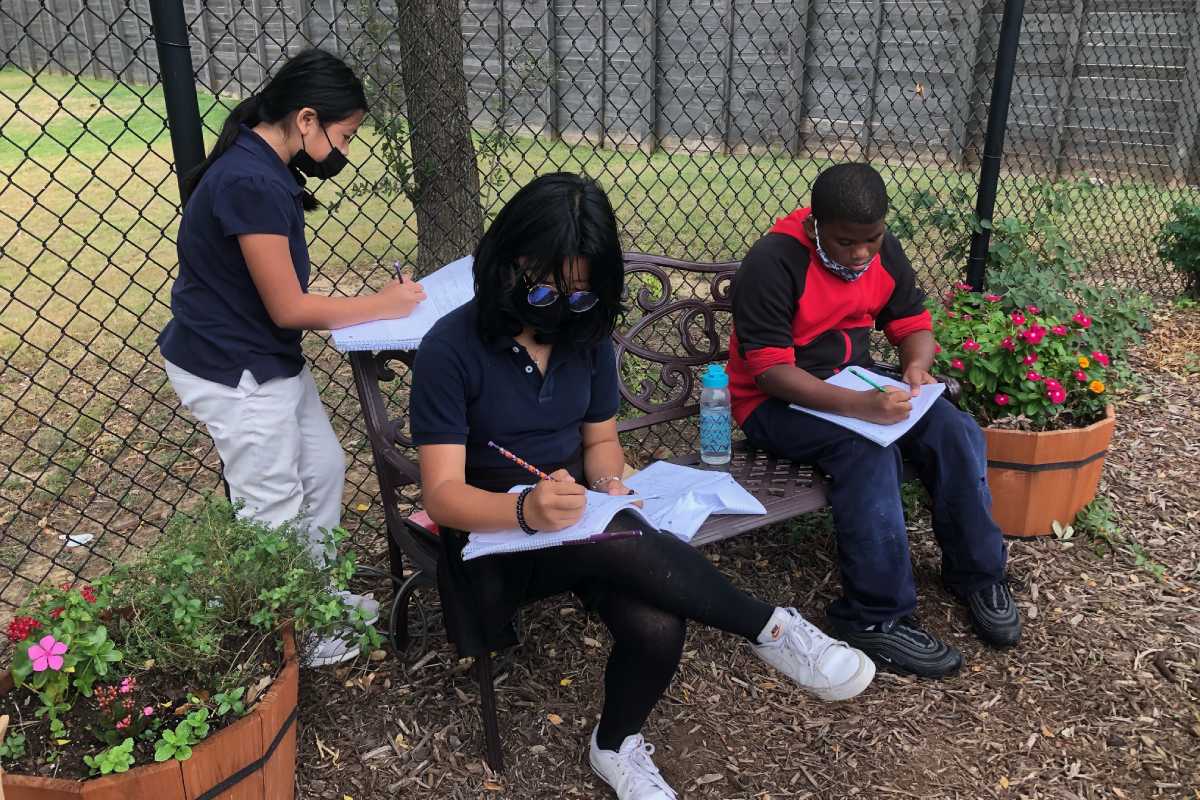To Improve Literacy Outcomes, It’s Time to Move Forward From Old Politics

Every few years, when the national and international school report cards come in, we are faced with the question of why our schools aren’t improving. How could the richest nation in the world’s history so consistently produce the most mediocre test scores, with only a 35% of our students performing at or above the proficiency mark in reading (Nation’sReportCard.gov, 2020)? The solutions to our reading struggles may be in asking teachers and administrators to re-evaluate some of their most deeply entrenched positions about teaching and learning.
Politics
It shouldn’t be surprising that in a nation that is so bitterly divided between conservatives and liberals that our school systems are also at war. Going back a number of years, reading gurus have been arguing about the proper way to teach reading. Liberal types fell into the whole language category, believing that immersion in great books and literature would encourage a love of reading and that children would gain fluency with time and minimal explicit skill work. The more rigid conservatives fell into the phonics camp, supposing that hard work and explicit skill instruction is the only way. Unsurprisingly, much like their government counterparts, both were met with similarly uninspiring results. High school test scores, according to the National Assessment of Educational Progress, in this country, have not improved since the early 1970s (Barshay, 2013).
This knowledge gave rise to the Reading First Initiative and a new compromise called balanced literacy. Children were to receive a comprehensive diet of phonemic awareness, phonics, vocabulary, fluency and comprehension instruction, with individual students receiving differentiated lessons tailored to their specific needs. What could be wrong with that?
Insiders within the education industry will know that like other aspects of American life, financial interests control virtually every aspect of public schools. If you’ve ever attended a state or national reading conference, you would have seen vendor tables lined up selling their products. Like other aspects of the economy these vendors cater to their consumers. One can easily spot the given companies who are selling literacy programs aimed at a love of reading or the ones who are marketing their products to the crowd that prefers explicit, no nonsense skill building materials. Similarly, the industry of professional journals and “pedagogy” of teaching books are equally divided. If you were to walk into a classroom or administrator’s office, you would notice somewhere behind her desk, a collection of liberal leaning or conservative leaning manuals and textbooks. Could it be that our schools are just a microcosm of our societies? I’m going to make the argument that all of these instructional resources are high quality, and that teachers and school administrators need to diversify the texts they are learning from.
Researchers are often susceptible to the same types of biased thinking. The current 2020 version of the reading wars involves high profile neuroscientists warring with high profile curriculum developers. Interestingly enough, they are still finding themselves falling into the same two camps. Many neuroscientists have noticed brain activation and lateralization in specific brain regions, namely what some are now referring to as the ‘letterbox’ region on the brain (Dehaene, 2009). This is where it is said that mental orthographic images are stored. The idea is that words must be properly dissected at an individual phoneme or sound level in order to be ‘orthographically mapped’ to have their letter sequences stored in long term memory for immediate later retrieval (Kilpatrick, 2015). There is no question that this process is true, but it also does not explain the entire puzzle of reading. How do students develop expressive fluency and language comprehension for larger units of text?
This is where the “balanced literacy” folks, the new phonics camp, or “Science of Reading” crowd have branded “The New Whole Language” come in. It has long been known that if you attempt to teach reading with only decodable readers and little attention to enjoyment through exposure to high quality literature that you would be developing something called word callers. These are students who can reliably and rapidly identify words, but read them in a staccato fashion with little to no expression. Further complicating this issue is the fact that very skill based, or ‘phonic-centric’ instruction can be demotivating. Children who start off behind their peers may identify as being poor readers and may find themselves avoiding books, and developing negative associations toward reading. The original version of ‘balanced literacy’ was designed to both provide the instruction children needed to build decoding skills and for fluency and comprehension. The reality is that balanced literacy never truly made its way into the mainstream. It was initially supported in several schools and with some high quality comprehensive programs, but districts quickly reverted back to their old ways, either doubling down on the meaning based instructional methods or the skill building approaches they had previously been partial to. Very few districts stayed the course and even fewer implemented the suggestions of the National Reading Panel with fidelity.
School Climate
The current climate within public schools is just as unsettling as the political climate that surrounds them. If power and greed is the root of all evil, then the IEP (Individualized Education Plan) meeting is the epicenter within public schools. Every teacher is familiar with “Playing the Game” at these contentious meetings. As a reading specialist, this means putting on a smiley face while you both try to stay awake through the meeting and also acting in the appropriate joyful manner. Here is what a reading specialist must do to keep his job. You must support the addition of a great many instructional accommodations. This may mean any number of tools that the child has access to in order to complete classwork without doing anything that resembles productive struggle. Some prime examples are “print to voice” reading software and “voice to print” typing, both of which have zero documented effect size on improving reading achievement. Parents have been made to believe otherwise.
The scientific evidence is clear. Differentiated, explicit instruction is the only evidenced treatment for reading disabilities (Kilpatrick, Joshi, and Wayner, 2019). In order to improve in reading, you must partake in activities that involve grappling with text. This means wrestling with sub-lexical units. Children need to learn phonics or how letter-sounds connect with letter patterns. They must also learn morphology, which is how meaningful word parts such as base words, prefixes and suffixes relate to the larger whole words. If you wanted to invent a tool for ensuring children never grow with regard to these skills, it would be machines that read all of the words to children and type all of the words for them.

Although IEP meetings were originally designed to help children, it seems that they have largely ended up doing the opposite. Time after time, I have attended meetings where the special education director is over-eager to please the parent. Without a true understanding of learning processes, the parent often advocates for every possible support they can get for their child. This creates a scenario where school leaders feel compelled to offer these supports, almost always including voice to print typing and print to voice “reading” software. Although seemingly well intentioned, these tools often distract from learning more than support it.
Part of the teacher’s role during an IEP meeting is to smile earnestly as the accommodations are heaped upon the child. After all, how could anyone be anti-helping children? Isn’t that the point? There is virtually no way to tell a special education director or caring mother that the accommodations actually withhold opportunity for learning. It’s this parallel universe where nobody can tell the truth that all teachers and specialists must live in if they wish to stay employed.
For children, the IEP meeting is like a ceremonial lowering of the bar, with clear guidance to remove all learning opportunities. The process communicates very low expectations and often contributes to a fixed negative mindset, and in many cases learned helplessness. This is the condition some children enter into when they are never offered meaningful opportunities to learn or productively struggle with meaningful texts. It’s also quite clear from research that the practice of labeling children, in any way, is very unhelpful (Hattie, 2017). Such labeling may actually play a role in reversing student outcomes. After all, it’s difficult to remain positive about your learning potential when the adult world, including teachers and parents, have told you that you can’t succeed without a certain collection of technologies.
Pedagogy
Further sharpening the divide is a recent wave of parent advocates who are united under the umbrella of “Decoding Dyslexia.” They are growing steam and aggressively influencing policy. These are frustrated parents, and they are taking no prisoners. Many are touting “Science of Reading” and aggressively pushing their agenda. The truth is they are actually making significant changes within the educational landscape, but they don’t appear to be aware of the negative consequences of their actions. The only change in instruction members seem to be advocating for from the neuroscience literature is to “teach more phonics,” and we know from past experience that this doesn’t necessarily work for children.
People who understand reading instruction from somewhat of a historical perspective understand the nature of how waves of reading philosophy swing back and forth like a pendulum between whole language and phonics instruction. A few prominent reading experts such as Sam Bommarito and P. David Pearson have been fighting back against the ‘Decoding Dyslexia’ movement, calling for a different progression forward. They are claiming that we should build off of the existing research base from both political sides and everywhere in between. Some are branding this counter movement as a ‘balanced evolution’.
The old paradox about reading instruction was whether we should maximize instruction or maximize reading experience. Many subscribed to the notion that one must provide more expert instruction. It made sense. Other reading researchers described an equally logical and plausible prescription. For students to get good at reading, they needed to actually spend more time reading. Equally plausible. The actual research supports that rather than continuing to swing back and forth between the two extremes, we need to be doing greater amounts of both. Phonics instruction and exposure to reading have a .70 and .43 effect size, respectively, on student achievement (Hattie, 2017).

To proceed, it’s necessary to first nail down the definition of exactly what this construct is we call reading. In a nutshell, reading is the fluent integration of language processes mediated through sensory experience with text. By now, most people are aware of the distinction between oral language learning and deciphering printed text or learning to read. Oral language develops naturally, with little to no direct instruction, while learning to read is a source of continual frustration for many students, parents and teachers alike. How can it be that we haven’t established a clear and definitive method for best teaching this process?
The correct answer to the issue is to continue to improve upon balanced literacy. This means teaching the knowledge of the language explicitly, guiding students with deciphering complex texts and also facilitating meaningful experiences where children consume a very large volume of printed material. The past rendition of ‘balanced literacy’ tried to do this but teachers were left with misaligned curricula and insufficient guidance. Twenty years of research later, the field is armed with new knowledge and improved methods.
There are three absolutely non-negotiable qualities of effective reading instruction. The components look slightly different by age group, but the fundamental truths are the same. Expert teaching of reading involves direct input, guided practice and independent practice. It’s probably the oldest and most reliable formula we’ve ever had in the teaching of anything. With attention to the brevity of this writing, I will only discuss specific methods for K-2 instruction.
The first component is explicit language instruction. With the K-2 crowd this means teaching both phonics and morphology extremely systematically. It’s best to use a scripted, research based curricula for this component. Research shows that this type of learning needs to be deliberate in that it introduces the elements of language explicitly and systematically. This is not to say the role of the teacher is any less important. They must carefully keep records of which elements of the ‘code’ are understood for each scholar and which elements require re-teaching or review. Teaching structured language is not meant to be complex, but to provide direct input and spaced practice with the fundamental building blocks of the language. To be concise, all readers must master these skills in order to become fluent with “orthographic mapping” or decoding words in such a fashion as to support entering them in long term memory. Children must also receive explicit instruction in how to make sense of sentence level syntax, or the grammar of how language is designed to convey meaning. These types of explicit lessons are best taught in a “no nonsense” fashion. For this portion of reading instruction, it’s best for teachers to take most of the emotion out of their disposition and focus on clarity. To use a familiar analogy everyone can relate to, when teaching structured language, it’s best to teach as a nun might… straight forward, no-nonsense and crystal clear, with direct input and sufficient review and practice.
The second component is guided instruction. In order to be effective, it must be with challenging texts. This ensures children will integrate linguistic knowledge with novel vocabulary or words they haven’t previously encountered. In the past, when children had been taught with what people used to refer to as instructional level texts, students would read with so much ease that they wouldn’t struggle with many words at all and would be able to predict word identities using context clues rather than analyzing sub-lexical word parts. This obviously was not a recipe for accelerating orthographic mapping or developing deep knowledge with novel vocabulary. Most researchers and teachers are rightly coming around to the idea that in order to guide students effectively with challenging texts it requires both expert prompting and also a lot of encouragement and scaffolding. To use a familiar analogy, a teacher guiding a student through a complex text must act like a sports coach, encouraging and prompting with expert precision, as the reader tackles this challenging task of decoding the language and complexities within the pages.
The final component of expert instruction is having children engage in a volume of meaning focused reading experiences. In order to build language comprehension, readers must read strategically and purposefully. They must also be reading materials they can easily process, at sufficient “flow rates” as to grow their understanding of all aspects of the language within them. Research has repeatedly shown volume of meaningful reading experience to be the most reliable predictor of vocabulary growth and gains in overall reading achievement.
Old models of instruction, however, allowed children to choose from entire libraries and read on virtually any topic. There is still a role for this type of free choice reading at the K-2 level, but most researchers and teachers are now considering the idea that a coherent and systematic knowledge building curriculum is necessary at all levels. To better support vocabulary growth and language comprehension, one improved method involves the reading of text sets which allow students to gradually build off previous learning and integrate new concepts and vocabulary with their existing knowledge bases. To use another familiar analogy, the effective teacher of reading in the content areas must act like somewhat of a hippie, sharing intense passion for specific topics and inspiring children onward, while providing intermittent teaching points, and guidance as they search to discover their identities and passions. After all, becoming a lifelong reader who reads deeply within given genres and topics is the ultimate goal of reading instruction.
With some degree of levity, but a greater degree of underlying truth, the effective reading teacher must be equal parts nun, sports coach and hippie to be truly effective. Many are abandoning old political positions and learning to integrate the best of many previous approaches as they continue to evolve forward with new understandings. An expert instructor must maintain a proper balance in all things, including the complexity of texts used for instruction, the explicitness of their teaching and also the stance they present toward multiple learning activities. This will be no easy task, but a necessary one, if we are to move forward as a nation of highly proficient readers.

This article is available and can be accessed in Spanish here.
How Did U.S. Students Perform on the most recent assessment? (2020). Retrieved from
Nation’s Report Card.gov
Dehaene, S., (2009). Reading in the Brain.: Longdon, England: Penguin Group.
Education By The Numbers. (2013). Retrieved from http://educationbythenumbers.org/content/high-school-test-scores-havent-improved-for-40-years-top-students-stagnating_251/
Kilpatrick, D., (2015). Essentials of Assessing, Preventing and Overcoming Reading Difficulties: Hoboken, NJ: Wiley
Kilpatrick, D., Joshi M., & Wagner R. (2019). Reading Development and Difficulties: Bridging the Gap Between Research and Practice.:Cham, Switzerland: Springer.
Visible Learning. (2017) Retrieved from https://visible-learning.org/hattie-ranking-influences-effect-sizes-learning-achievement/









